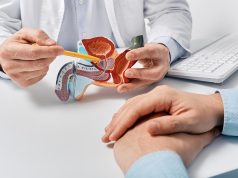No benefit seen in continence for sling placement during robotic assisted radical prostatectomy
WEDNESDAY, Jan. 18, 2017 (HealthDay News) — Placement of a retropubic urethral sling fashioned from autologous vas deferens during robotic assisted radical prostatectomy does not improve recovery of continence, according to a study published in the February issue of The Journal of Urology.
Hao G. Nguyen, M.D., Ph.D., from the University of California-San Francisco, and colleagues conducted a phase 2 trial in which age-stratified patients were randomized to undergo robotic assisted radical prostatectomy by multiple surgeons with or without sling placement (95 and 100 patients, respectively). The outcomes were complete and near continence at six months.
The researchers found that the proportions reporting complete continence were 66 and 65 percent for those without and with a sling, respectively, while 86 and 88 percent, respectively, reported near continence at six months after surgery; times to complete and near continence were similar between the groups. There was a correlation for younger age with higher likelihood of complete and near continence (odds ratios, 1.74 and 2.18 per decreasing five-year interval) after adjustment for clinical, urinary, and surgical factors.
“This trial failed to demonstrate a benefit of autologous urethral sling placement at robotic assisted radical prostatectomy on early return of continence at six months,” the authors write. “Continence was related to patient age in adjusted models.”
Full Text
Copyright © 2017 HealthDay. All rights reserved.








